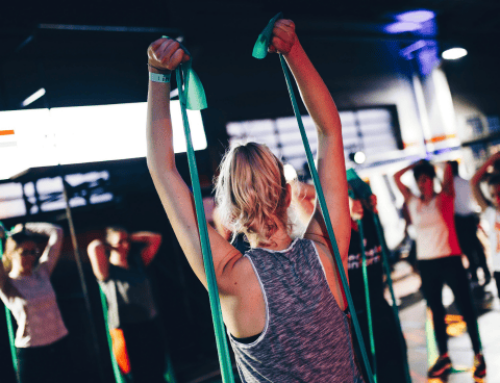![]()
If you feel standard Push-Ups are too easy, perhaps it’s time for some variation.
Hindu Push-Ups are a fantastic option for athletes of all ability levels to obtain the muscular pectorals that are necessary for strength, power and effective posture, movement and stability—all things athletes should be concerned with.
RELATED: 3 Push-Up Variations for a Stronger Chest
Hindu Push-Ups can be superior to Bench Presses for a few reasons:
- By being able to manipulate the position of your body, you can create more tension in your chest, a key component for building muscle.
- Bodyweight exercises are excellent for improving the mind-muscle connection, so you can create greater tension within the target muscle.
- Because no external weight is involved, most athletes aren’t tempted to do more than they are capable of just to appear stronger or to stroke their ego.
The best way to include Hindu Push-Ups in your programming is to use them as an assistance exercise. Assistance exercises can be used for injury prevention and/or muscle hypertrophy, making them more suited to moderate to high reps (6-12-plus).
RELATED: 15 “Next Level” Push-Up Variations
Although you can manipulate your body to make this movement more difficult, it isn’t a great option for maximal strength development. Instead, you should perform Hindu Push-Ups after you’ve done a maximal strength-focused movement like the Barbell or Dumbbell Bench Press.
To start, perform 3 sets of 6-12 repetitions after you finish your maximal strength exercises for the day. For example, start your workout with Barbell Bench Press for 3 sets of 3 reps. After you finish all sets and reps of the Bench Press, do Hindu Push-Ups for 3 sets of 10 reps.
RELATED: Why Is It Called “Hindu Push-Up”?
Programming Push-Ups as a finisher (the last sets of the training session) also works extremely well on upper- and full-body days.
How to Perform Hindu Push-Ups
1) Assume a push-up position with your feet hip-width apart. Keep your core tight and back flat.

2) Push your torso backward and raise your butt up to move into a pike position so your body forms an inverted V.

3) Bend your elbows to lower your upper chest to the ground while keeping your butt up. As you lower your chest, drop your butt down so your body is in a straight line when you’re closest to the ground.

4) Straighten your arms to push your chest up, but allow for a slight arch in your back similar to the yoga Upward Dog position.

5) From this position, push your torso backward and repeat the sequence beginning at Step 2.
Source:
Schoenfeld, Brad J. “The Mechanisms of Muscle Hypertrophy and Their Application to Resistance Training.” Journal of Strength & Conditioning Research, 24 (2010): 2857-872.
[cf]skyword_tracking_tag[/cf]






Leave A Comment